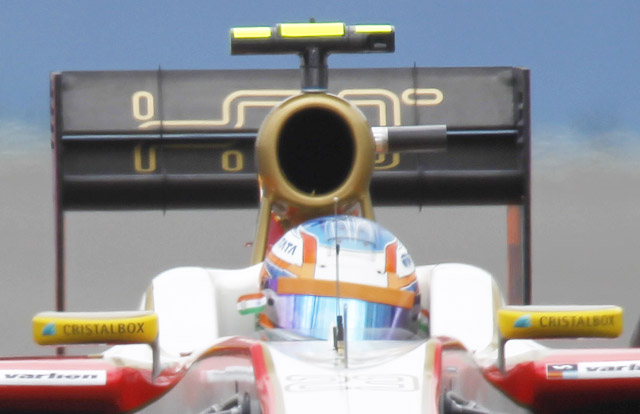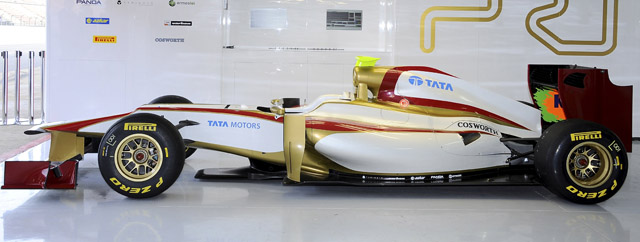
In late 2009 as new Formula 1 team came into being, designed to run to a budge of just £40m. Campos Grand Prix had partnered with Dallara to develop a new car the F111, but changes in the teams ownership and management lead to that car never being fully completed. The team had morphed into Hispania, and eventually HRT (Hispania Racing Team). Since it made its race debut it has propped up the Formula 1 grid but a recent restructure is aimed at changing that.
The first car the Hispania-Dallara F110 of 2010 raced for a season without any notable developments beyond some new wing mirrors and a different make of fuel cell. The team was not ready for the first race of the 2010 season and was barely able to make it on track for qualifying. The following seasons car the F111 was late too and the trend continued into 2012 although the F112 did manage a brief shakedown run at Barcelona ahead of the opening race meeting.
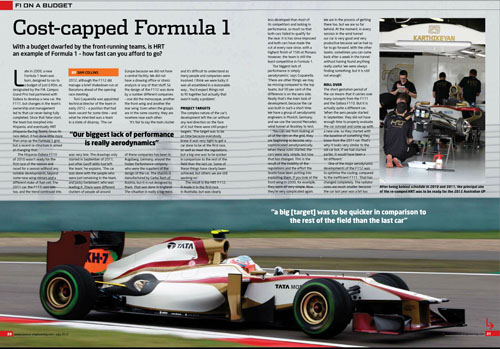
READ A FULL TECHNICAL REVIEW OF THE CAR HERE
The resulting car known as the HRT F112, is clearly less developed than most of the cars around it, and was at first lacking in performance badly, with both cars failing to qualify for the Australian Grand Prix. But that has improved and both cars have made the cut at every race since with a highest finish of 15th at Monaco. However the team is still the least competitive in Formula 1.
Subscribe to Racecar Engineering
Keep up with the latest developments in motorsport technology with Racecar Engineering, the world’s leading publication for technical insight.
Save up to £33 when you subscribe and never miss an issue
Choose from our Print, Digital and iPad editions
Melbourne
Car 22: HRT F112-001
Position: DNQ
Driver: Pedro De La Rosa
Car 23: HRT F112-002
Position: DNQ
Driver: Narain Karthikeyan
Another disaster for HRT, missing pre season testing saw the underdeveloped F112 fail to qualify within the 107% time. The FIA did not let either car start. Scrutineering on one of the cars had to be delayed as it had not been built when the team arrived at the track. DRS was also not functioning on either car.
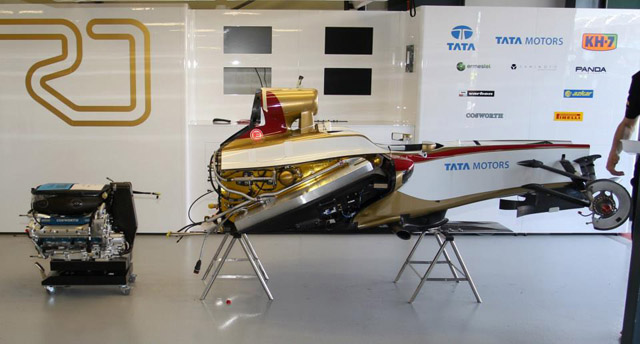
The F112 is a fairly conventional car which is built around the F112 chassis, which is largely based on the F111, itself a lightly updated Dallara F110. Power once again comes from the Cosworth CA 2.4 litre V8 but new for this year is the gearbox on the car which is supplied by Williams, in place of the Xtrac unit used on the F110 and F111. This means that the rear end of the car is quite different to the F111 with pullrod suspension and of course the new transmission itself, it is not clear.

At Melbourne the car featured a number of upgrades from its Barcelona shakedown run, immediately noticeable was the updated front wing (above). The initial wing (below) was very basic indeed, appearing to be a 2011 wing with some elements removed.
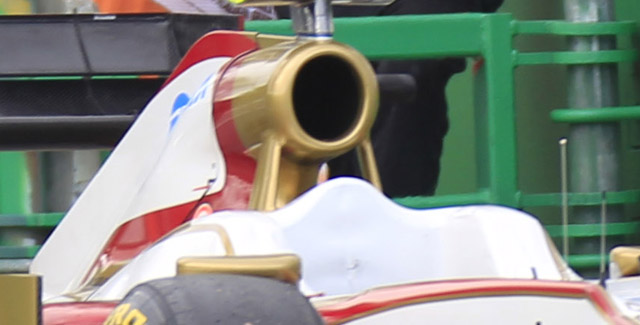
Comparing the roll hoop to that of the F111 (below) the overall shape is identical though the support on the newer car is larger – though this could just be the composite fairing.

Sepang
Car 22: HRT F112-001
Position: 21st
Driver: Pedro De La Rosa
Car 23: HRT F112-002
Position: 22nd
Driver: Narain Karthikeyan
The team carried out its first tests with the DRS and hard compound tyres and with every stint Pedro de la Rosa’s and Narain Karthikeyan’s sensations at the wheel of the F112 improved. However, the Indian driver’s car stopped halfway through the session due to a hydraulic issue which was fixed in time for the second session. In the afternoon, both de la Rosa and Karthikeyan worked on short stints to continue accumulating data with different set-ups and tyre compounds besides trying to optimize cooling, which is key at such a tough event as Malaysia. It was found that the F112 does indeed suffer from cooling issues
Shanghai
Car 22: HRT F112-001
Position: 21st
Driver: Pedro De La Rosa
Car 23: HRT F112-002
Position: 22nd
Driver: Narain Karthikeyan
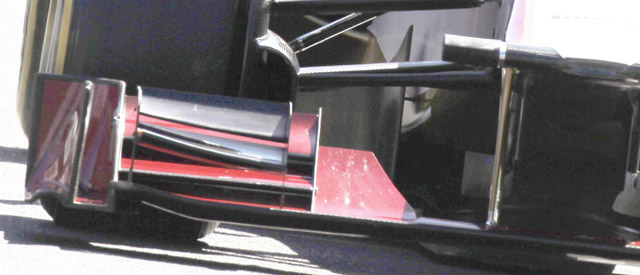
The F112 was fitted with another version of the F111 front wing. As the tiny team struggles to keep up. It is not getting inside the 107% rule in qualifying, and running as well as 104.4%.
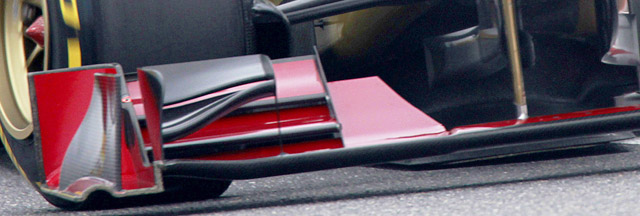
Bahrain
Car 22: HRT F112-001
Position: 20th
Driver: Pedro De La Rosa
Car 23: HRT F112-002
Position: 21st
Driver: Narain Karthikeyan
With barely any time to rest since last Sunday’s race in Shanghai, the team reacted to the change in conditions excellently. The upgrades brought to this Grand Prix to optimize the cooling of the engine also worked as expected and neither of the two cars showed signs of excessive overheating. The cooling changes featured a pair of small NACA type duct on the rear part of the cockpit surround (below).
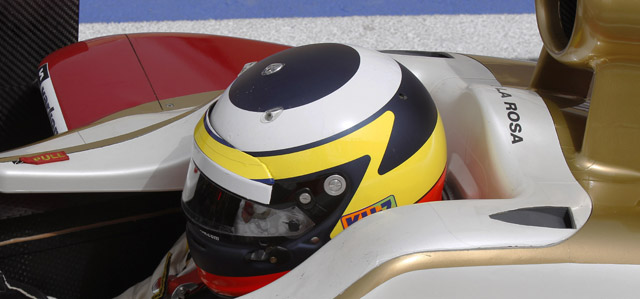 Toni Cuquerella, Technical Director: “We’ve continued to progress adequately and, once again, surpassed the cut without any problems. To be more precise, this time we were in the 104.3% and much closer to our rivals. In the practice session we tried out different set-ups and the changes made worked well in qualifying so we can say we’re satisfied.”
Toni Cuquerella, Technical Director: “We’ve continued to progress adequately and, once again, surpassed the cut without any problems. To be more precise, this time we were in the 104.3% and much closer to our rivals. In the practice session we tried out different set-ups and the changes made worked well in qualifying so we can say we’re satisfied.”
Barcelona
Car 22: HRT F112-002
Position: 19th
Driver: Pedro De La Rosa
Car 23: HRT F112-003
Position: DNF (wheel nut)
Driver: Narain Karthikeyan, Dani Clos (FP1)
Monaco
Car 22: HRT F112-002
Position: DNF (Contact)
Driver: Pedro De La Rosa
Car 23: HRT F112-003
Position: 15th
Driver: Narain Karthikeyan
Luis Pérez-Sala, Team Principal: “We’ve got mixed feelings today. Pedro got hit from behind in the early stages, which was a real shame but, on the other hand, Narain completed a very good race and we achieved a 15th place finish, our best result this season so far. This race is always complicated and, given the forecast, we started with a strategy planned for a wet race. In the end it didn’t rain and that cost us a couple of positions. But we’re satisfied because we finished the race, with one car at least and only two laps off the winner, something which here in Monte Carlo is positive for us”.
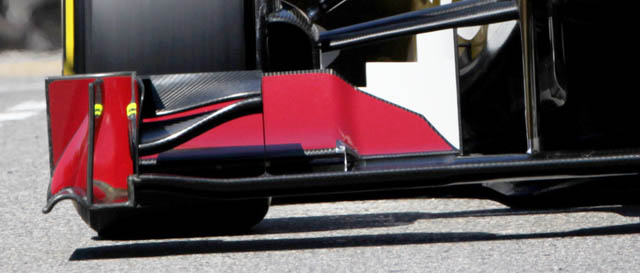
At Monaco HRT fitted the trailing edges of its front wing with wickers in an attempt to get a bit more downforce.
Montreal
Car 22: HRT F112-002
Position: DNF (Brakes)
Driver: Pedro De La Rosa
Car 23: HRT F112-003
Position: DNF (Brakes)
Driver: Narain Karthikeyan
Luis Pérez-Sala, Team Principal:“The truth is I can’t deny I’m disappointed because it’s the first race we haven’t finished with either car. It’s a shame because we were going well, but we had a temperature issue with the brakes on both cars which impeded us from finishing. We knew this would be one of our weak points at this circuit, given the strong braking corners and, unfortunately, we confirmed this. On the other hand, I’m happy for the race Pedro and Narain we’re doing. Now we must resolve the problems we’ve detected and think about Valencia. What better place to turn things around than at home”.
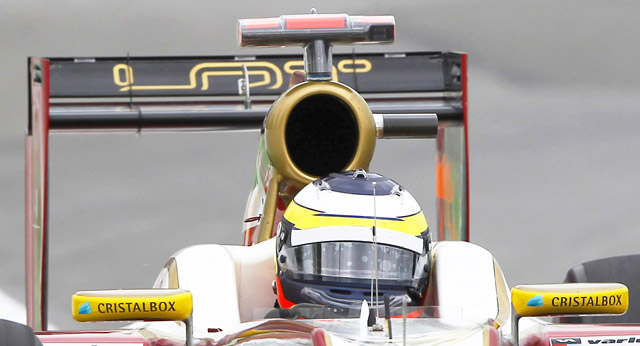
A new rear wing was fitted to both HRT’s at Montreal, designed to reduce drag the cars were consistently amongst the fastest through the speed traps. This could bode well for the team at Monza and Spa, where the low drag 2009 Force India VJM02 set pole and challenged for race wins. Compare the new spec wing (above) with the older version (below).
